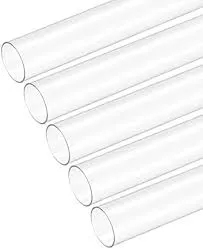Aug . 28, 2024 05:36 Back to list
High-Quality Waste Pipe Fittings for Efficient Plumbing Solutions
Understanding Waste Pipe Fittings A Comprehensive Overview
Waste pipe fittings play a crucial role in plumbing systems, ensuring the efficient disposal of wastewater from sinks, toilets, and other fixtures. Understanding these fittings is essential for homeowners, DIY enthusiasts, and professionals alike. This article delves into the different types of waste pipe fittings, their functions, and best practices for installation and maintenance.
Types of Waste Pipe Fittings
Waste pipe fittings come in various types, each designed for specific applications within a plumbing system. The most common fittings include
1. Elbows These are used to change the direction of the waste pipe, typically at a 90-degree or 45-degree angle. Elbows allow for flexible routing around obstacles within walls or under floors.
2. Tee Fittings Shaped like the letter “T,” these fittings allow the connection of three pipes, enabling the distribution of wastewater from a single source to multiple drainage points.
3. Wyes Similar to tees, wyes provide a junction for three pipes but are designed to promote smoother flow and minimize clogs. They are ideal for long drains that require efficient drainage.
4. Couplings These fittings connect two pieces of pipe, allowing for easy extension or repair. They come in various forms, including slip couplings, which join two pieces of pipe directly, and reducing couplings, which connect pipes of different diameters.
5. Adapters Used to connect different types of pipe materials, such as PVC to metal or rubber, adapters provide versatility in plumbing systems. They ensure a secure fit without compromising the integrity of the system.
Functions of Waste Pipe Fittings
waste pipe fittings

The primary function of waste pipe fittings is to facilitate the movement of wastewater from fixtures to the drainage system. They help to prevent leaks, reduce backflow, and maintain proper drainage. The right selection of fittings can significantly impact the overall efficiency and longevity of a plumbing system.
In addition to their functional roles, waste pipe fittings also contribute to the aesthetic of a plumbing installation. With a variety of designs and finishes available, they can complement the overall look of a bathroom or kitchen, especially when visible.
Installation and Maintenance Best Practices
Proper installation of waste pipe fittings is crucial to prevent leaks and clogs. Here are some best practices to consider
- Use the Right Tools Ensure that you have the correct tools for cutting, fitting, and sealing pipes. A pipe cutter, wrench, and plumber's tape are essential for a successful installation.
- Follow Manufacturer Guidelines Each fitting may have specific installation instructions, including recommended sealants or adhesives. Following these guidelines can help avoid future issues.
- Regular Inspections Regularly inspect your plumbing system for signs of leaks, corrosion, or clogs. Early detection can save costly repairs down the line.
- Consider Professional Help If you’re unfamiliar with plumbing installations, consult a professional plumber. Their expertise can prevent mistakes that could lead to bigger problems.
In conclusion, understanding waste pipe fittings is essential for anyone involved in plumbing design, installation, or maintenance. With a variety of types and functions, proper knowledge and practices can ensure a reliable and efficient plumbing system, ultimately leading to a smoother and hassle-free waste disposal process.
-
High-Quality PPR Pipes and Fittings Durable ERA PPR & PVC PPR Solutions
NewsJul.08,2025
-
Black HDPE Cutting Board - Durable, Non-Porous & Food Safe HDPE Plastic Cutting Board
NewsJul.08,2025
-
High-Quality CPVC Panel Durable HDPE & PVC Panels Supplier
NewsJul.08,2025
-
Double PE Welding Rod Supplier - High Strength, Durable & Versatile Welding Solutions
NewsJul.07,2025
-
High-Quality PVC-O Pipe Supplier Durable 75mm PVC Pipe & Connections Leading PVC Pipe Company
NewsJul.07,2025
-
HDPE Drainage Pipe Supplier – Durable & Corrosion-Resistant Solutions
NewsJul.06,2025

